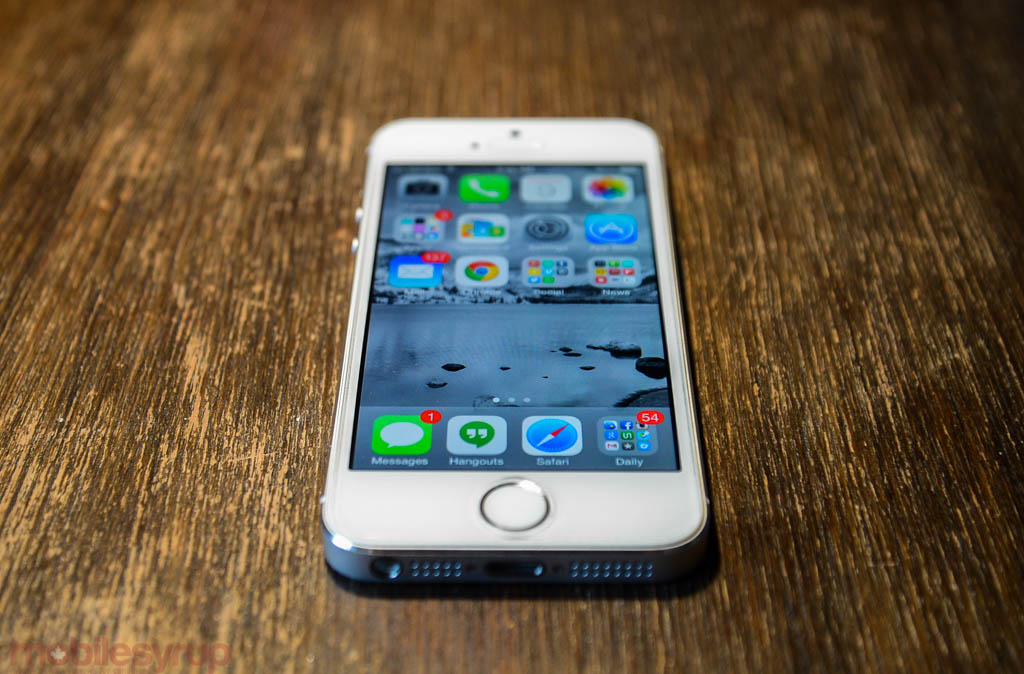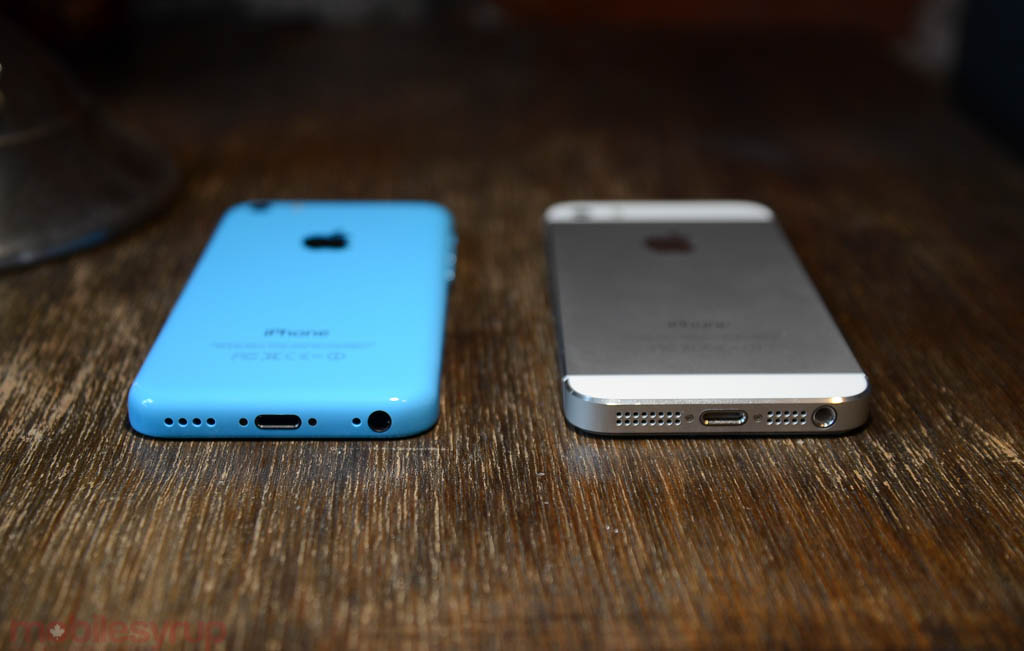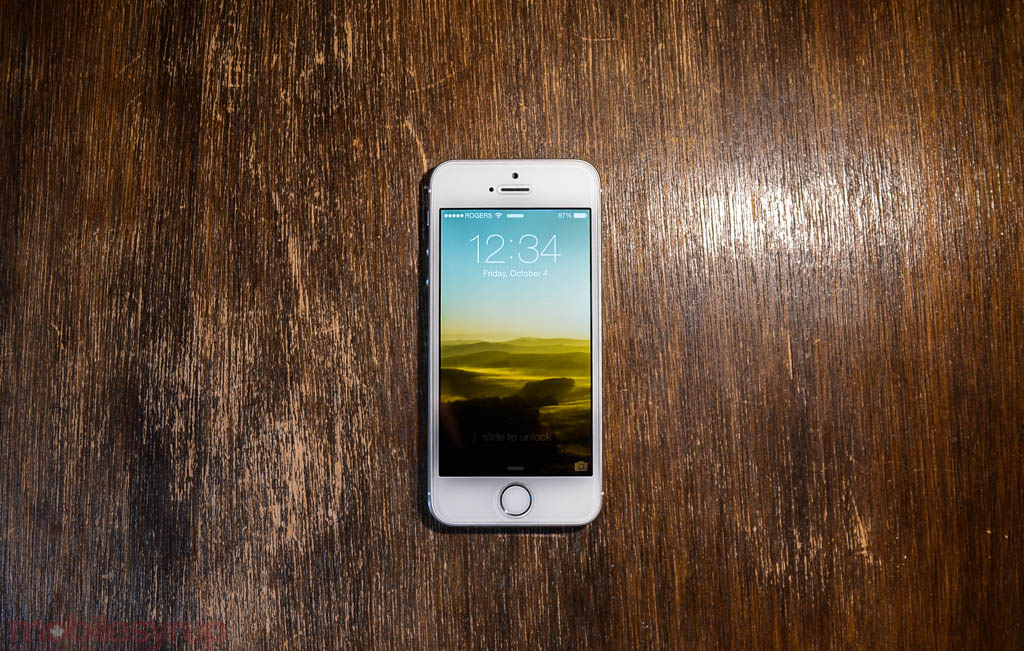
I don’t like writing iPhone reviews. Everyone gets on your case because they have a preconceived notion of what an iPhone is. It’s the industry’s saviour; it’s the industry’s most insidious conduit to conformity.
In truth, the iPhone is no longer either of those things. With the release of two new products this year, Apple is tacitly acknowledging that its most profitable offering is at its best when it’s most accessible and familiar. The iPhone 5s, the “tock” version of the iPhone 5, is the best phone Apple has ever created, and it has some fantastic features, including an improved camera, a fingerprint sensor and a much faster processor. It’s also the same 4-inch aluminum outfit running the same version of iOS 7 as its predecessor.
Despite that familiarity, or perhaps thanks to it, the iPhone 5s is one of the best smartphones ever produced.
Specs
- iOS 7
- 4-inch 1136×640 pixel IPS display
- 1.3Ghz dual-core A7 chip w/ M7 motion co-processor
- 1GB DDR3 RAM, 16-64GB internal storage
- 8MP rear camera / 1.2MP front-facing camera
- WiFi (a/b/g/n), Bluetooth 4.0 + LE, A-GPS/GLONASS
- 1560mAh battery
- UMTS/HSPA+/DC-HSDPA (850, 900, 1700/2100, 1900, 2100 MHz); LTE (Bands 1, 2, 3, 4, 5, 8, 13, 17, 19, 20, 25)
- 123.8 x 58.6 x 7.6 mm
- 112 grams
Display & Design
To the naked eye, very little has changed from the iPhone 5. The two-toned design has been augmented with a gold-and-white version and the dark slate model has been repurposed Space Grey, with a more scratch-impervious rear aluminum backplate, but the design is largely unmolested.
Of course, that 4-inch screen is getting smaller and smaller every year, a side effect of all the Android manufacturers upping both the size and resolution of their respective flagships. The iPhone 5s has the same 1136 x 640 pixel IPS display as the 5 and 5c, and it’s a great panel: lush, vivid colours; industry-leading brightness; expertly-calibrated white levels; contrast ratios that would make the LG G2 blush. There is little to complain about but for the size, which continues to be the only real negative I can lay against the phone’s design.
But Apple really has an impossible choice, at least for now: going above 4-inches would mean having to interrupt the 4x scaling strategy they’ve employed since the iPhone 4. Apple has purposefully created an ecosystem of only a few screen sizes and resolutions, and though they will likely have to compete on sharpness at some point, the 326ppi of the iPhone 5s feels no less sharp than it did three years ago. The problem is that companies like LG and HTC are just furnishing their phones with better screens than the iPhone.

From a design perspective, I believe Apple is still unmatched. HTC came close with the One, and companies like Sony and Motorola have made some massive improvements over the last year, but the iPhone 5s is a stunning piece of industrial design. The buttons feel solid all, and the display’s touch response is unrivalled in mobile.
There are two external differences to iPhone 5s, one more important than the other. The rear camera now has a dual-tone flash, called TruTone, which lights a scene at varying degrees of intensity at both warm and cool hues, to lend a subject more realistic skin tones. The second major improvement is the home button, which is now blank after years of carrying that familiar squircle. Not only is the button itself less concave, but it houses a high-resolution fingerprint sensor that quickly unlocks the phone and approves app payments. We’ll cover both in more detail later on.
What’s important to note is this, and it will be repeated throughout: the iPhone 5s is not really aimed at iPhone 5 users, but rather iPhone 4 or 4S users looking to upgrade after two or three years. For them, the 5s is an incredible update, largely because it allows access to many important iOS 7 features that aging A4 and A5 chips don’t support. The iPhone 5 lacks a couple things like Slo-Mo camera mode and the M7 motion co-processor for apps that support it, but to iPhone 4 and 4S users the new phone is really a treat. It’s lighter and thinner, better designed, and with a camera that takes much better photos, especially in low light scenarios.

Performance & Software
You may have heard a lot of hubbub about the A7 chip and how it’s 64-bit, which makes it really fast. You may have also heard that the A7 is just dual-core and the iPhone 5s only has 1GB of RAM. Both these things are true, and they boil down to this: the A7 is currently the fastest processor on the market, and despite being dual-core often bruises Qualcomm’s super-fast quad-core Snapdragon 800 in CPU and GPU tests. There are a couple good reasons for this great performance, which Apple promises is twice that of last year’s A6.
First, the A7 uses the new ARMv8 architecture, which disposes of years of legacy instruction sets in favour of a drastically more efficient set of processes. While being 64-bit does not inherently lead to faster performance, ARMv8 running at the same speed as last year’s A6, coupled with apps optimized for 64-bit, does lead to faster performance. At the same time, Apple has bumped up the RAM’s speed, using DDR3 chips over DDR2 in the iPhone 5 and 5c. Finally, the graphics chip in the iPhone 5s is based on PowerVR’s G6430 sixth-generation Rogue design, the first of its kind released to the public, which works out to be twice as fast as last year’s SGX544MP3.
The A7 also has a low-power Cortex M3 co-processor inside, called the M7, used to calculate and parse information from the various sensors installed in the iPhone 5s. At the moment, its functionality is fairly limited, allowing for fitness apps to more efficiently utilize that data, but like the 64-bit nature of the A7 itself, the potential use in future applications is momentous.
Apple has beaten Android not only to 64-bit hardware but also a 64-bit operating system. While we didn’t touch on this in our iOS 7 review, the very core architecture of iOS has been overhauled to take advantage of the increased number of registers. At this point the subjective performance improvements are minor — apps open more quickly, and frame rates are slightly higher in existing games — but the net benefit will be seen in 4-6 months, when games and apps begin taking advantage of the hardware.
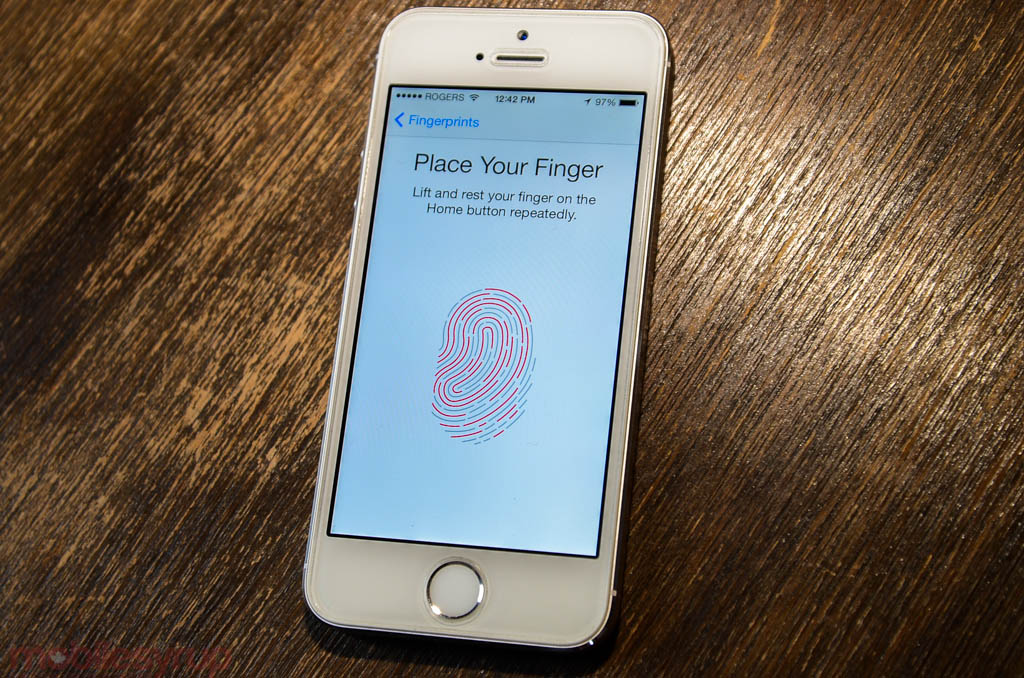
One of the most important additions to the iPhone 5s, and the first for an Apple device, is the fingerprint sensor dubbed Touch ID. At a very high level, the hardware measures the differences in the whorls and ridges between your various skin layers, making it much more difficult to mimic than optical fingerprint readers of old. At the same time, Apple promises that it never stores the data on iCloud, keeping information of up to five digits in a secure element within the A7 chip itself.
Touch ID is a miracle of convenience, though it shouldn’t be thought to completely replace a passcode. Instead, it works alongside a passcode to facilitate faster unlocking and app purchasing. Because of its relatively complicated implementation, and the newness of the technology, Apple has not opened up the sensor to third-party apps — probably a good thing for the time being — so its use cases are limited. But turning on and unlocking the iPhone 5s becomes a painless procedure, buoyed by the knowledge that 99.9% of the population would not be able to easily capture a fingerprint and reproduce it to “trick” the sensor. At this point, two-factor authentication is not possible — the ability to use both a fingerprint and four digit passcode to unlock the phone — but I can see that being one of the first features promoted in iOS 7.1.
Though we had some issues with Touch ID on one of our review units, for the most part it just works. Wet or sweaty fingers tend to trip up the sensor, but once trained its accuracy and speed improves. It’s also possible to add a family member’s or friend’s finger to let them easily use the device. As for future implementations, I can also see Apple enabling a Guest Mode of sorts for kids and those you don’t want to share sensitive data with.
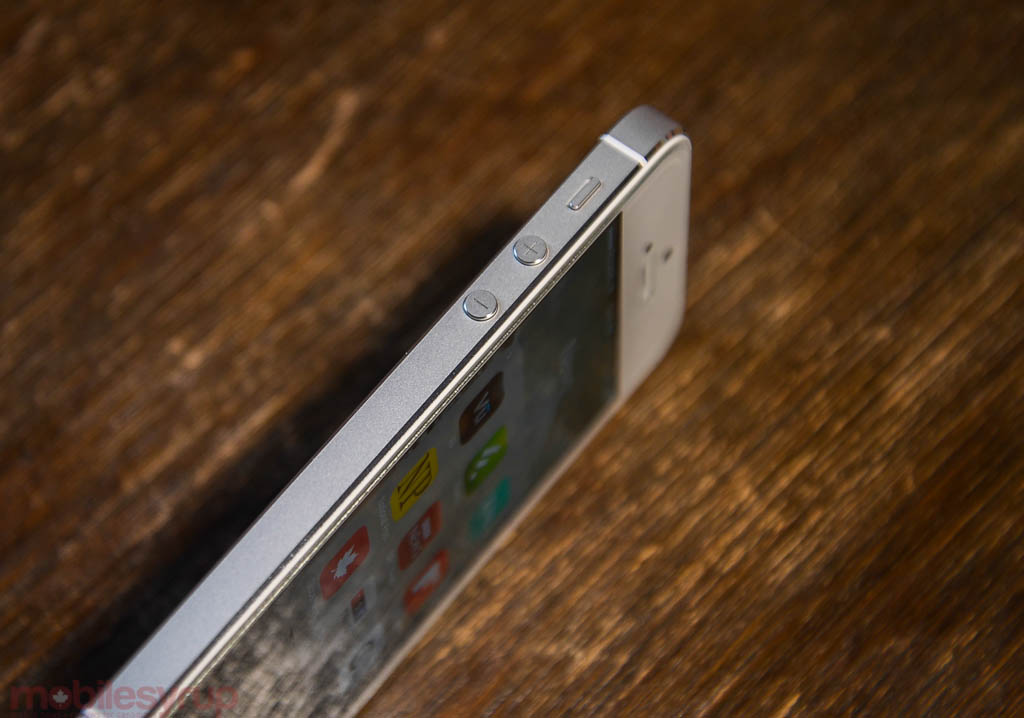
There are some aspects of iOS 7 that still vex me. For all of its improvements, Apple’s unwavering emphasis on simplicity has seen its keyboard go from one of the best in the industry to one of the most mocked. That there is no option to use swipe gestures for input is unfortunate, but the real tragedy is that it’s just not very good. SwiftKey and BlackBerry 10’s virtual keyboard, along with Swype and other third-party Android offers, are just better and more intuitive input methods.
Same with the Notification Centre which, though an improvement over iOS 6, still forces users to dismiss notifications from each app individually. And though Apple has promised notification syncing over iCloud, I still open my iPad every few days to find hundreds of identical messages I recently dismissed on the iPhone.
iOS 7 has also proven, at least in its early incarnation, to be relatively unstable. More than once, with more than one review unit, I experienced kernel panics followed by a hard lock and soft reset. Apple has also weathered several lockscreen exploits, leading to a new software version with more on the way. iOS 7 is such a drastic overhaul, both for Apple and developers, that many existing apps either don’t work, crashing on launch, or work spasmodically. Most well-loved apps, from Instagram to Twitter to Evernote to Camera+, have been updated with new interfaces and iOS 7-specific features, but many thousands of others are stuck in a skeumorphic zombie life, half alive, half dead.
Then there’s Siri and notifications. After using the Moto X, with its touchless controls and OLED-powered active notifications, having to turn on the iPhone to check notifications and hold down the home button to activate the voice assistant seems like a chore. I barely use Siri because I’m faster without her (or, with iOS 7, him). Though the speed, accuracy and breadth of Siri has improved in iOS 7, I rarely find myself needing to use it. On the other hand, being able to merely say, “OK, Google Now,” and have the Moto X spring to life, ready to wait upon me, feels far more modern.
iOS 7 is a big deal, a significant change to what was becoming an outdated OS. It’s not perfect, but it’s still better than Android in many ways, and catching up to it in others. We’ll see what Google has planned with Android 4.4 KitKat, but the fact that so many iPhone users — over 70% at this point — have already updated to the newest version, free of carrier bloatware or oversight, is miraculous.
All this change enables the iPhone 5s to leave behind the old — old interfaces, zombie apps, outdated ideas. As we’ll see in the next section, one of the unspoken heroes of the A7 chip is its updated ISP, or image signal processor, which helps the device take some of the industry’s best pictures on a mobile device — and yes, that includes the Lumia 1020 and various 13MP competitors like the Note 3 and G2 — with the speed and accuracy of a DSLR.
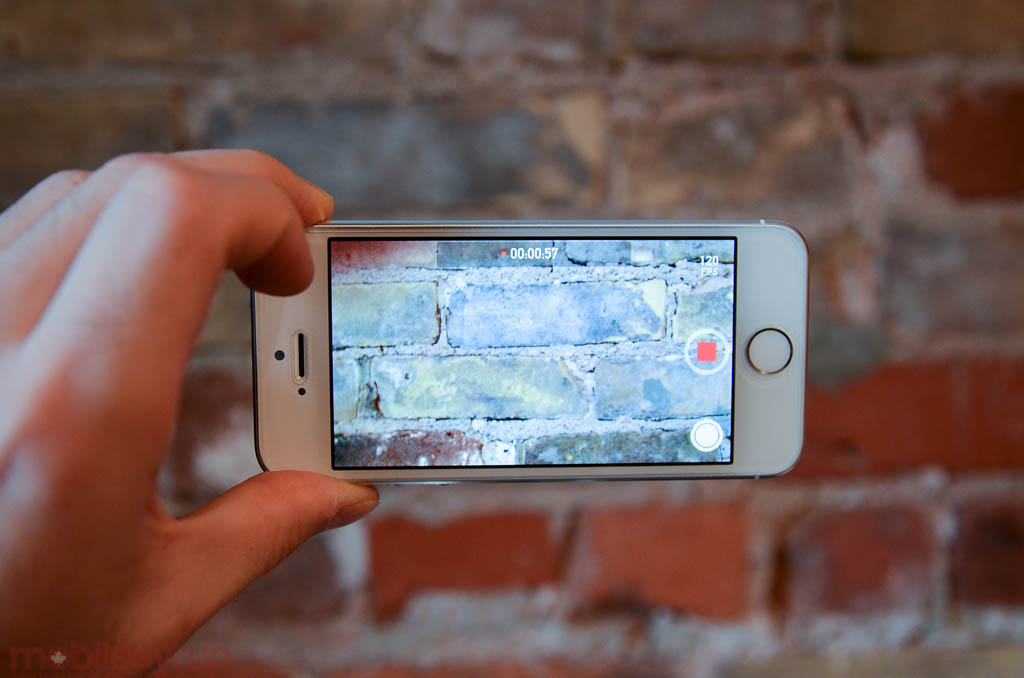
Camera
The box may say 8MP, but the iPhone 5s features a sensor that’s 15% larger, and a lens that’s significant wider and faster than the iPhone 5 and 5c. Add to that a new slow motion mode and an enhanced burst feature, the iPhone 5s has the most enjoyable camera experience of any smartphone, period.
That isn’t to say the iPhone 5s always takes a better photo than its competitors, namely the HTC One, LG G2, Samsung Galaxy Note 3 and Nokia Lumia 1020, but it does take the most consistently high-quality photos, with the fewest compromises, of its class.The 1.5 micron pixels that make up its 8 million total are slightly larger than in the iPhone 5, and the wider aperture — the lens apparatus and autofocus module — are faster, too, with more pronounced depth of field.
In testing, I found the iPhone 5s to produce exemplary photos, often maintaining a relatively low ISO in areas of diminished light. I found the autofocus to be greatly improved, and much faster, than the iPhone 4S, though the immediate benefits over the iPhone 5 in this regard are not as apparent.
Slo-Mo is likely the best new feature of the bunch, though Burst Mode is not far behind. The new image processor, combined with the speed of the A7, captures 720p video at 120fps. While other devices can do this, Apple has integrated a quick-trim editor into its video capture workflow that makes it easy to slow down a portion of the content for effect. That you can’t slow down more than one portion of the video at a time is disappointing, but hopefully Apple adds it in the future edition.
Burst Mode also takes advantage of the A7. By holding your finger on the shutter, users can take up to 999 photos with no breaks between them; the app is constantly capturing frames before and after the shutter is pressed. Integration with the Gallery app lets users pick their favourite photos and delete the rest, but half the work is already done for you: it best guesses the photos that you’ll want to keep.
Smart touches like these continue to make the iPhone a better camera, though many Android devices are catching up.

Connectivity & Battery Life
The iPhone 5s has a slightly larger battery than both the iPhone 5 and 5c, but does not increase battery life substantially over those models. This is likely due to the more power-intensive nature of the 64-bit architecture, which due to an increased number of registers requires more RAM and NAND storage for apps than the equivalent 32-bit versions.
I still found it relatively easy to get through an entire day with the iPhone 5s — I was usually down to 20% by the time it got plugged in before bed. Though iOS 7 allows for background updates on a per-app basis (which can be turned off by the user), I haven’t found it to be less efficient overall than iOS 6. Where Apple has always excelled, and exceeded its Android counterparts, is in single-use functions, likely because the per-core clock is so much lower (and, in the A7’s case, the manufacturing process more efficient) than the equivalent Samsung or HTC. I found video playback was a good 20% longer — around 10 hours — than the average Android device, though the recent rash of Snapdragon 800-powered devices have closed the gap significantly, albeit with battery cells often double the size.
Though the iPhone 5s supports significantly more LTE bands than its predecessor, it lacks two important things for the Canadian market. First, it does not support Band VII, also known as 2600Mhz, which Rogers uses in many parts of the country. It also doesn’t support Category 4 LTE, which supports speeds of up to 150Mbps along with carrier aggregation. While the former is already widely used, the latter will begin to roll out in the next year or so.
Sound from the iPhone 5s appears identical, both in quality and volume, from previous versions. The mono speaker located on the bottom is fine for listening in a small room, but it does not compare to the BoomSound of the HTC One, nor the crystal clarity of the upcoming BlackBerry Z30, both of which offer front-facing stereo speakers and much louder maximum volume with low distortion.
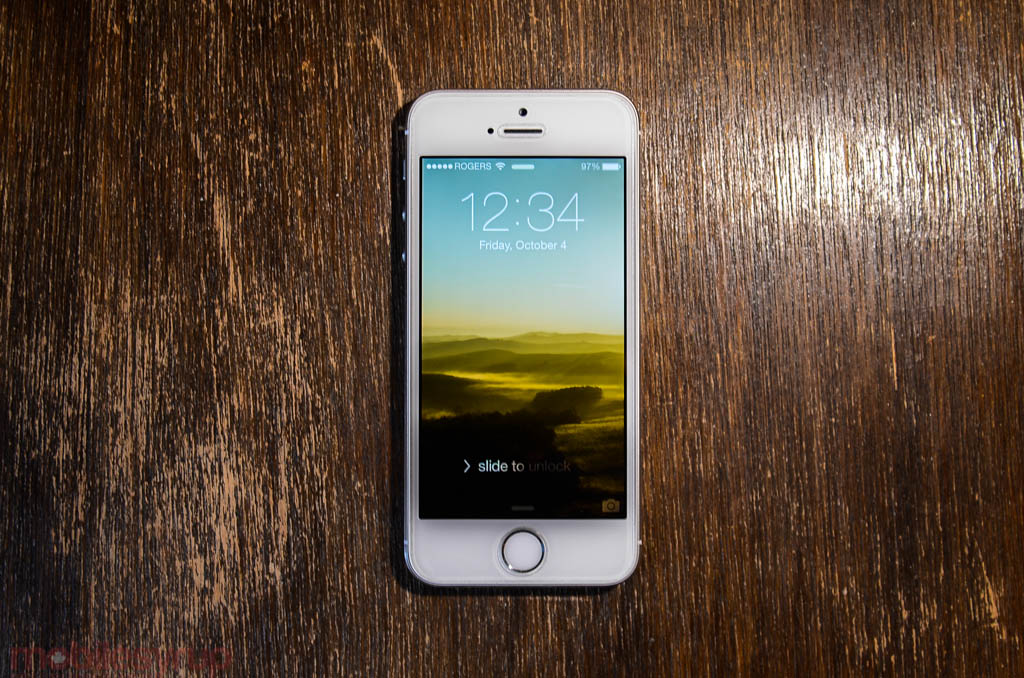
Carrier Highlights
I was lucky enough to test out various iPhone 5s from all the incumbent carriers, including Rogers, TELUS and Bell. We’ll highlight a few things unique to each model, since the iPhone comes free of all carrier add-ons.
Rogers
Rogers offers a number of services for iOS users, including its excellent Anyplace TV Home Edition app for cable subscribers. The MyAccount app hasn’t yet been updated to support the larger iPhone 5/5c/5s screen, but works well to review bills and phone usage on the go. Rogers users can also watch select TV shows with the Anyplace TV app, which costs $5 for 10 hours of viewing over LTE, and is free over WiFi with a cable subscription.
More importantly, Rogers offers plans under the Share Everything moniker, which is an improvement on the incumbents’ existing share plans. Rogers is the only carrier to allow 10 devices to share data on a single account, and also features a $160 15GB tier. Recently, the company expanded its Share Everything plans to support small businesses, too, with a maximum data bucket of 30GB. The ability to add a basic feature phone with unlimited calls and text to any account is a bonus, too, facilitating simplified billing.
Bell
Bell approaches its iOS offering with one major message: Bell TV. The company has been heavily pushing its subscription-based service, bundling 10 hours of viewing per month with most of its shareable Voice & Data Plus plans. It also recently overhauled Bell TV for its TV subscribers, providing free access to nearly 100 channels over WiFi or LTE. It’s clear a lot of care has gone into making the app attractive and easy to use, too.
Bell also offers a self-serve app so iPhone users can monitor voice, text and data usage.
TELUS
Though TELUS doesn’t own the same media entities as Bell and Rogers, it has by far the best My Account app of the incumbent carriers.
It also offers its Western Canada TV subscribers access to shows and movies via Optik to Go, and the TELUS Network Experience app lets users submit areas of low signal around the country. TELUS tends to update its iOS apps more often than Bell and has a more keen design team than Rogers, too.

Competition
The iPhone 5s is the phone to beat this year, and various Android manufacturers have brought some serious weapons to the fight.
At the top of the list is the Samsung Galaxy S4, which despite being released nearly seven months ago is still a fantastic device and likely the one potential device iPhone defectors will realistically consider. It may not have the latest hardware or software, but it offers a pretty compelling set of features for the price, and its expandable storage, removable battery and large 5-inch Full HD is an easy sell over the smaller iPhone form factor.
Another Samsung device to consider is the newly-released Galaxy Note 3, which is a huge upgrade over the Note II and a fantastic smartphone in its own right. Samsung has drastically improved the TouchWIZ experience, and better S Pen integration is the killer app this year. The camera doesn’t match the sharper, faster iPhone 5s, and iOS 7 offers a better range of apps and games, but the Note 3 is a business person’s dream phone.
Then we have the Moto X, which is the iPhone 5s of the Android world. Compact and minimalist, its 4.7-inch edge-to-edge AMOLED screen offers roughly the same pixel density as Apple’s flagship. Though its camera has proven to be its downfall, the Moto X overcomes its hardware limitations by putting forth the cleanest Android experience to date. It’s well-made, modestly-priced and extremely fast. It’s also, like its aforementioned Samsung counterparts, 2600Mhz-enabled.
The outliers, like the LG G2, Sony Xperia Z1 and, to a lesser extent, the aging HTC One, are great devices in their own rights. The G2 is a better all-round device than the Xperia Z1, which has a pretty underwhelming screen, but is held back by LG’s awful UI. Sony’s 20MP camera sensor is pretty outstanding, but the photo taking experience still leaves a lot to be desired.
On other platforms, we have the Nokia Lumia 1020, a tremendous piece of hardware mired (destroyed?) by a software experience that feels stuck in 2010. The BlackBerry Z30 is also a great smartphone with a disappointing app ecosystem and a company that may not have the impetus, staff or money to support its devices a year from now.

Conclusion
The iPhone 5s may be expensive, small and its platform heavily curated, but it’s probably the best choice for most casual smartphone buyers today. Apple has crafted an unmatched app ecosystem, made better by substantive improvements in iOS 7, both for users and developers. While it’s certainly not an essential upgrade for iPhone 5 owners, to anyone coming from an earlier iPhone, or an Android device released before mid-2012, the 5s is a substantial improvement.
While the lack of Category 4 LTE and Band VII support is disappointing, and the small form factor may turn some buyers away, the 5s is a great all-round smartphone. The camera improvements alone are worth the upgrade, and the A7 will show its stripes in the coming months as developers take better advantage of its capabilities. Then there’s Touch ID, which has shown itself to be extremely useful and versatile.
It’s these small changes that keep Apple lovers coming back.

